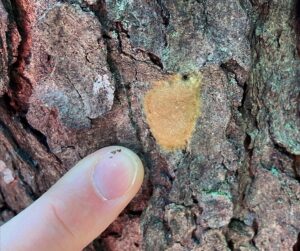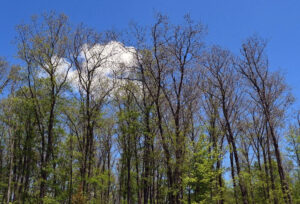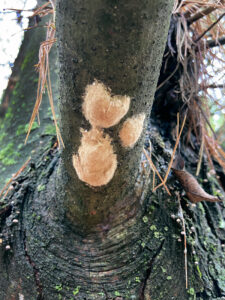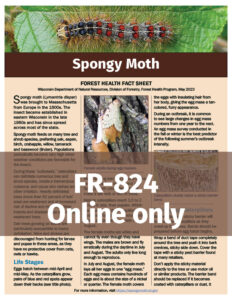
A closeup of a fresh spongy moth egg mass on a tree. Now is the time to locate and destroy egg masses to reduce the number of caterpillars attacking your trees in the spring. / Photo Credit: Bill McNee, Wisconsin DNR
As fall begins, landowners all over Wisconsin – including those involved in the Wisconsin Department of Natural Resources (DNR) Managed Forest Law program – are urged to remember the fight against spongy moths.
After all, the best time to put a dent in next year’s infestation is to spend some time during fall and winter finding and removing spongy moth egg masses – each of which contains 500 or more potential future caterpillars.
The invasive pest caused a state-record defoliation total of 373,000 acres in 2023. The outbreak seemed on track to continue in several areas of the state in 2024 until rain and cooler weather boosted the emergence of two natural enemies of spongy moth caterpillars, a virus and a fungus, which helped to greatly reduce the population in many areas last July.
Still, caterpillars survived to pupate, mate and leave behind egg masses that will become next spring’s batch of caterpillars. Fortunately for landowners, the next few months mark the best opportunity to attack the spongy moth population, eliminating the caterpillars before they have a chance to emerge and feed. Continue reading “Landowners Urged To Fight Spongy Moth”





